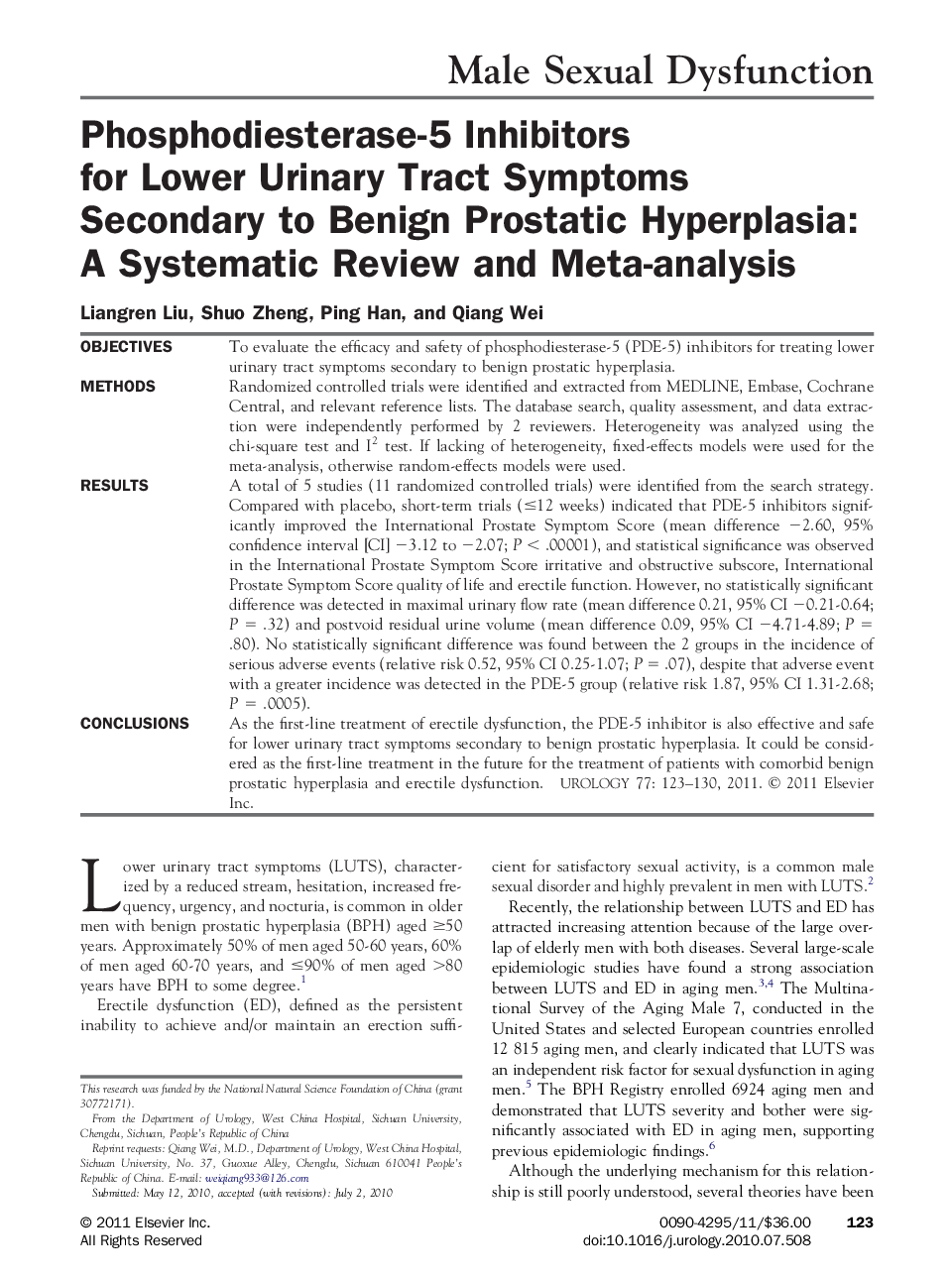| Article ID | Journal | Published Year | Pages | File Type |
|---|---|---|---|---|
| 3901691 | Urology | 2011 | 7 Pages |
ObjectivesTo evaluate the efficacy and safety of phosphodiesterase-5 (PDE-5) inhibitors for treating lower urinary tract symptoms secondary to benign prostatic hyperplasia.MethodsRandomized controlled trials were identified and extracted from MEDLINE, Embase, Cochrane Central, and relevant reference lists. The database search, quality assessment, and data extraction were independently performed by 2 reviewers. Heterogeneity was analyzed using the chi-square test and I2 test. If lacking of heterogeneity, fixed-effects models were used for the meta-analysis, otherwise random-effects models were used.ResultsA total of 5 studies (11 randomized controlled trials) were identified from the search strategy. Compared with placebo, short-term trials (≤12 weeks) indicated that PDE-5 inhibitors significantly improved the International Prostate Symptom Score (mean difference −2.60, 95% confidence interval [CI] −3.12 to −2.07; P < .00001), and statistical significance was observed in the International Prostate Symptom Score irritative and obstructive subscore, International Prostate Symptom Score quality of life and erectile function. However, no statistically significant difference was detected in maximal urinary flow rate (mean difference 0.21, 95% CI −0.21-0.64; P = .32) and postvoid residual urine volume (mean difference 0.09, 95% CI −4.71-4.89; P = .80). No statistically significant difference was found between the 2 groups in the incidence of serious adverse events (relative risk 0.52, 95% CI 0.25-1.07; P = .07), despite that adverse event with a greater incidence was detected in the PDE-5 group (relative risk 1.87, 95% CI 1.31-2.68; P = .0005).ConclusionsAs the first-line treatment of erectile dysfunction, the PDE-5 inhibitor is also effective and safe for lower urinary tract symptoms secondary to benign prostatic hyperplasia. It could be considered as the first-line treatment in the future for the treatment of patients with comorbid benign prostatic hyperplasia and erectile dysfunction.
